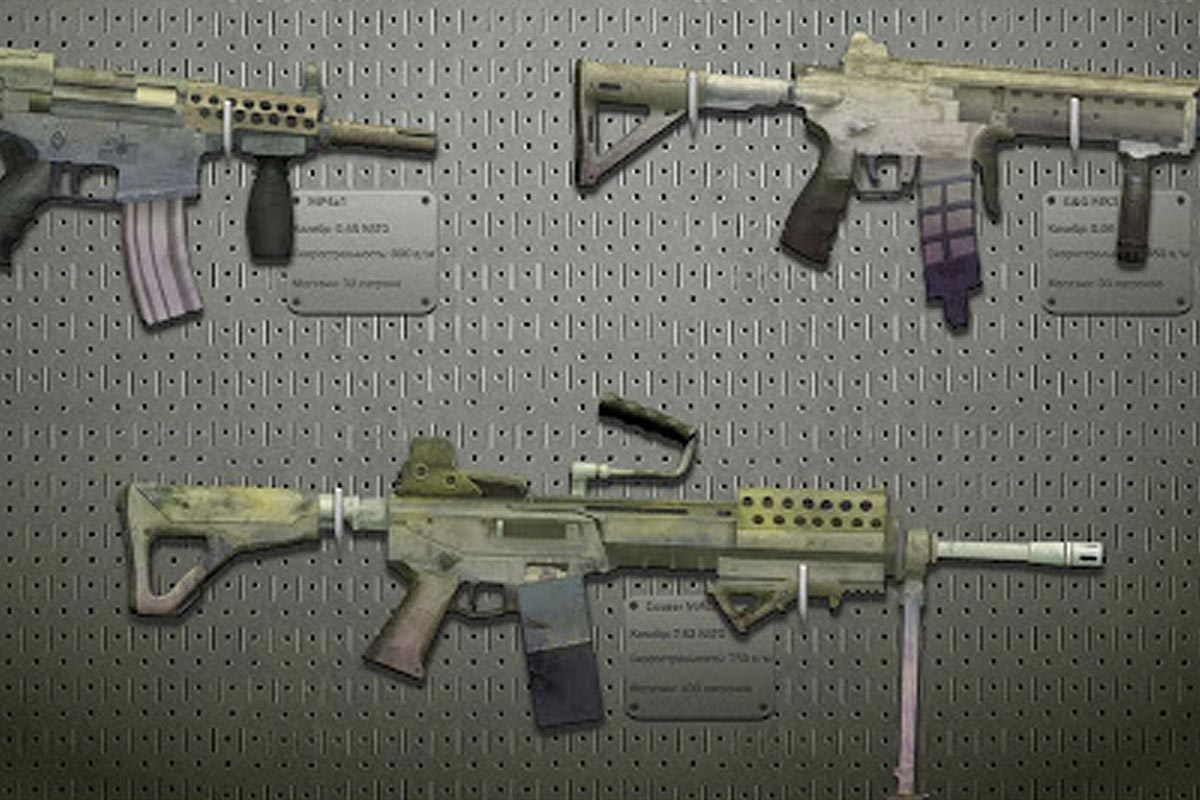Integrating Military Education into Gun Skin Design Curricula

Let’s face it—video games and military aesthetics have been inseparable for decades. From the pixelated battlefields of the early '90s to today’s hyper-realistic first-person shooters, military themes are a big part of gaming culture. But here’s a twist: what if military education was used not just to build tactics or lore, but to directly inspire and inform gun skin design?
Yeah, you read that right. We’re talking about combining two worlds—military knowledge and digital artistry—to create a curriculum that produces some of the most compelling, story-rich weapon skins out there. Let’s dive into why that’s more than just a cool idea—it might just be the next evolution in game design.
Why Gun Skins Are More Than Just Cosmetic
At first glance, gun skins might seem like eye candy—just digital paint slapped on your favorite in-game weapon. But if you’ve ever dropped actual money on that Doppler Karambit or spent hours grinding for a rare drop, you know skins are a huge deal.
Skins carry status. They tell stories. Sometimes, they’re tributes to historical battles or fictional representations of futuristic tech. And the best ones? They don't just look good—they mean something.
So, what if the design of these skins could be informed by real military history, strategy, and symbolism? That’s where military education steps in.
Colleges and Courses Educating the Future of Military-Inspired Design
As game design and digital art continue to grow in both popularity and complexity, colleges and universities around the world are adapting their curricula to meet the demands of this evolving field. Some are even offering specialized programs or courses that can prepare students to integrate military knowledge and design aesthetics, like the creation of hyper-realistic weapon skins, into their work.
1. The Savannah College of Art and Design (SCAD)
The Savannah College of Art and Design (SCAD) is renowned for its comprehensive approach to digital art and game design. SCAD offers a Bachelor of Fine Arts (BFA) and Master of Fine Arts (MFA) in Interactive Design and Game Development, where students are taught both the technical and creative aspects of game design.
While these programs don’t directly focus on military education, they emphasize realism and storytelling in game art, which provides students with the foundation to explore military-inspired themes. Students often engage in historical and thematic research, much like they would in a military-themed skin design project using the service PapersOwl to work with all types of student assignments or specialist projects. The interdisciplinary nature of SCAD’s programs encourages students to explore a wide range of design elements, including weapon aesthetics, visual symbolism, and game world-building. The hands-on experience allows students to develop skins and assets with deep meaning and authenticity.
2. University of Southern California (USC) School of Cinematic Arts
USC’s School of Cinematic Arts is another key player in educating the next generation of game designers and visual artists. USC’s Interactive Media & Games Division offers programs such as the Bachelor of Arts in Interactive Entertainment and the Master of Fine Arts in Interactive Media and Games. The school is known for its interdisciplinary approach, blending storytelling with cutting-edge technology.
USC often includes courses on narrative design, 3D modeling, and even military simulation in games, which could be directly applied to gun skin design. The university also provides access to military consultants and has partnerships with defense technology companies, which could benefit students who wish to design skins or game environments based on real-world military aesthetics.
3. Full Sail University
Full Sail University is known for its comprehensive programs in digital art, media, and game design. The Bachelor of Science in Game Art program at Full Sail offers students an in-depth look at 3D modeling, character and environment design, and asset creation.
While Full Sail doesn’t offer a specific program focusing on military education, it does place a heavy emphasis on realism, an essential aspect of military-inspired design. The university’s Game Design program and Digital Art tracks teach students how to incorporate detailed textures, realistic materials, and immersive worlds—all of which are vital skills for creating military-themed skins. In addition, Full Sail offers various elective courses where students can explore specialized topics like character development and environmental storytelling, both of which would play a major role in integrating military aesthetics into digital art.
The Intersection of Military Education and Design Thinking
Military education isn’t just about learning to fire a weapon or march in formation. It includes disciplines like strategy, logistics, communication, camouflage theory, weapon history, unit insignias, and even psychological warfare. Sounds like a design goldmine, right?
Now picture this: a curriculum that teaches aspiring designers how to take this kind of military knowledge and apply it to create skins with depth, authenticity, and storytelling potential. It’s like teaching art students to speak the visual language of warfare.
Imagine a skin inspired by WWII fighter planes, complete with historically accurate nose art and squadron symbols. Or a camo pattern drawn from real desert warfare studies, built to blend into a fictional Martian terrain. That’s the kind of fusion we’re talking about.
Curriculum Breakdown: What Would It Look Like?
Let’s get practical. If we were to build a curriculum that blends military education with gun skin design, what would it actually include?
1. Military History & Visual Symbolism
This module would give students a crash course in global conflicts—from trench warfare in WWI to modern-day urban operations. The focus? Extracting visual and thematic elements that could inspire gun skin concepts.
Think: emblems, unit badges, tactical gear aesthetics, battlefield graffiti, and patriotic motifs. All these elements can be reimagined into digital designs that feel grounded, not generic.
2. Camouflage Theory & Application
Camouflage is both science and art. Students would explore how different environments influence camo patterns—from dense jungles to arid deserts to snowy peaks. Then, they’d design skins that could theoretically work in those settings—whether realistic or sci-fi.
Bonus points for blending real patterns with fictional textures. The outcome? Skins that feel immersive and purposeful, not just flashy.
Bridging the Gap Between Art and Tactical Realism
Let’s be real—most in-game skins are flashy on purpose. They’re meant to stand out. But that doesn't mean they can’t be inspired by real tactics.
Military educators can teach designers how and why certain colors, patterns, and materials are used in real-world operations. Designers can then flip that knowledge to create ironic twists—like hyper-camouflage with neon overlays, or stealth-themed skins with sci-fi accents.
It’s about understanding the rules… so you can break them intelligently.
3. Weapon Anatomy and Customization
You can’t design a great skin if you don’t understand the canvas you're painting on. This part of the curriculum would delve into how firearms are constructed, where skins apply (barrel, grip, mag, etc.), and how design interacts with animation and wear effects.
Military education brings in a whole new angle—understanding how actual weaponry is used and maintained in the field, which could inspire realistic wear-and-tear elements, authentic material finishes, or custom mods in the skin's appearance.
Case Studies: Games Already Doing This (Sort Of)
Let’s give credit where it’s due—some game devs are already dabbling in this territory. Titles like Call of Duty, Escape from Tarkov, and Arma 3 have skins that feel deeply connected to military realism. But usually, the depth is implied, not explicitly educated.
CS:GO skins like the "AWP | Dragon Lore" are legendary not because they mimic military designs, but because they tell stories. Now imagine coupling that narrative flair with military-informed aesthetics. You’d get designs that are both emotionally compelling and tactically inspired.
Why This Matters for the Next Generation of Designers
We’re in a new era of gaming, where digital items carry real-world value and players crave authenticity. A curriculum that teaches the fusion of military education and design gives students a powerful edge—especially in the growing market of skin design, modding, and virtual economies.
It's not just about making something that looks “cool.” It’s about creating immersive artifacts that tell a story, reflect history, or imagine futures. When designers understand the logic behind military visuals, they can create skins that resonate on a deeper level with players.
And let’s not forget—this kind of curriculum builds cross-disciplinary skills. Students learn art, history, psychology, storytelling, and digital production all at once. It’s like boot camp for next-gen creatives.
Challenges and Ethical Considerations
Of course, blending military education into entertainment design isn’t without its pitfalls. There’s a fine line between respectful homage and glorification. Educators and designers alike would need to consider the ethical implications of drawing from real conflicts.
Cultural sensitivity, historical accuracy, and the portrayal of violence are all factors that would need thoughtful integration into the curriculum. But handled with care, this approach can elevate design beyond surface-level aesthetics.
Conclusion: A Curriculum Worth Firing Up
In the world of digital design, gun skins are like modern-day coats of arms—symbols of identity, status, and style. By integrating military education into gun skin design curricula, we’re not just making skins more realistic or cool-looking. We’re adding depth, purpose, and narrative power.
This fusion of military insight and artistic expression could produce the next generation of designers who don’t just follow trends—they set them. So, whether you’re a game dev, a design educator, or just a fan of digital cosmetics, it might be time to start thinking like a soldier and an artist.
Because in this game, the best skins aren’t just worn—they’re earned.



0 comments